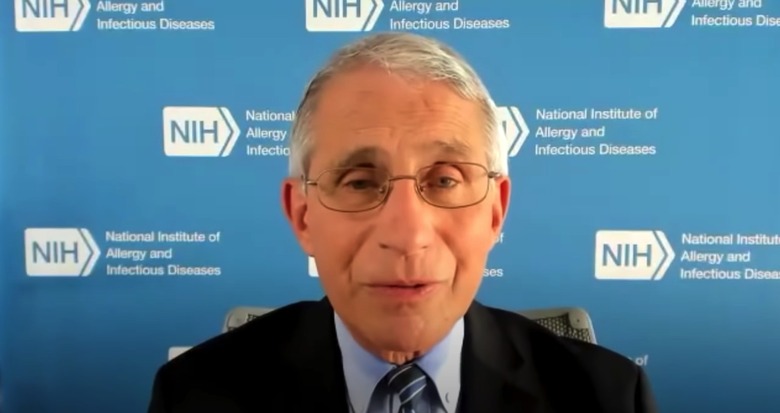Fauci Says We Need To Do One Thing To Avoid A Coronavirus Catastrophe This Winter
- Coronavirus transmission can be stopped and the curve can be flattened, Dr. Anthony Fauci insisted in a wide-ranging interview that Brown University hosted on YouTube.
- Wearing face masks, social distancing, and hand hygiene are among the few key steps needed to reduce the infection rate.
- But Dr. Fauci also identified the key problem that needs to be fixed so that the country doesn't head into a catastrophe in the fall or winter.
America accounts for more than 25% of worldwide coronavirus infections as of Saturday morning, with nearly 5.1 million confirmed cases of the 19.6 million global cases. And COVID-19 is still spreading at alarming rates in several states. The infection rate appears to have reached a plateau, but there are no guarantees with this particular pathogen. The massive outbreaks that started a few months ago as economies reopened proved that you can never be too careful.
As the northern hemisphere is approaching fall and winter, health officials everywhere will start preparing for a nightmare scenario. It's not just going to be COVID-19 that circulates freely inside communities, but also the flu, a virus that thrives in cold weather. If left unchecked, the novel coronavirus will continue to crowd hospitals and some regions could experience a secondary flu epidemic on top of COVID-19.
Speaking with Brown University's Dr. Ashish K. Jha, the incoming dean at the School of Public Health, Dr. Anthony Fauci said the country needs to do one thing to avoid a catastrophe in the fall or winter.
Addressing Arizona's ability to flatten the curve of the massive outbreak that started in July, Fauci said that the same five or six "fundamental principles" of prevention apply everywhere. These are "universal wearing of a mask, physical distancing, avoid crowds, outdoor is better than indoors, wash your hands," the director of the National Institute of Allergy and Infectious Diseases said.
"Stay away from bars," Fauci continued. "Bars are bad news when it comes to the spread. I'm just going to repeat it again 'til I'm exhausted. Those things work," he added when referring to those principles.
"I believe strongly, and I'll say very clearly, that we do not have to completely lock down if we do things right. I believe we can open up the economy, get the employment back, get people out of the doldrums of being locked down. If we do it prudently, carefully, and the way the guidelines say."
He then addressed the clear discord between the scientific approach of handling a pandemic and the political messaging, which induced this idea that's either a complete lockdown or a fully open economy.
"Anybody who says we're not living in a divisive era in our country is not paying attention to what's going on in our country," the public health expert said. "So what happened... instead of saying, 'Let's utilize the public health principles as a vehicle to opening up the country,' it was as if there's public health principles, and then there's 'open up the country,' and they're not synergistic with each other."
He continued, "We really need to get that point across that one is not the enemy of the... one is a gateway to get to the other. I call myself a realist. But I'm a cautious optimist too. And I think that if we can somehow get the country unified to do that together, I don't think we need to go into the fall and the winter thinking we're going to have a catastrophe. We could go into the fall and the winter looking good if we do certain things."
The full interview is available below:
